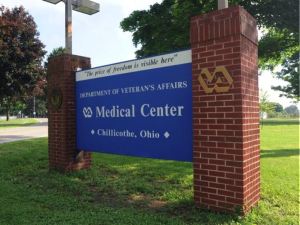By Tony Ferguson, Special to The Gazette
7:06 p.m. EDT October 20, 2014
(Photo: Frank Robertson/Gazette, Frank Robertson/Gazette)
Woody biomass is quietly expanding as a viable, cost-effective energy alternative to fossil fuels in America.
Though this natural, renewable and locally produced resource will never supply all of our nation’s energy needs, when operated in concert with sustainable forest management, it can be an effective energy option in both rural and urban areas.
Energy-efficient commercial and industrial woody biomass boiler systems of various types and sizes are gradually building an excellent track record in schools, hospitals and municipal complexes across the Northeast, mid-Atlantic and Midwest states —including at the Veterans Affairs Medical Center in Chillicothe.
This past August, we took a look back at three recently installed biomass energy demonstration projects at facilities in Ohio, Pennsylvania and Massachusetts to see whether the longer-term results lived up to their expectations.
What we found out was that, regardless of the location or facility type, woody biomass energy systems achieved excellent results over the long term. Representatives from all three facilities also said they would recommend their biomass plant solutions to other facilities with similar needs and resources.
It is important to note that commercial and industrial boiler systems are not “plug and play” devices. Boiler plants are complicated systems that require the operator to learn what is needed to get the best results, whether they are fueled with natural gas, propane, oil or wood.
After installation, every new boiler plant has a commissioning stage to optimize performance given the variability in fuel and building heat demands, and that process is particularly important with biomass systems.
Commissioning and optimization might take a few days or a few months, depending on the complexity of the system. However, as these three operators moved along this learning curve, they all found that their woody biomass systems could be optimized to provide an efficient and effective energy solution for their needs.
For instance, the VA Medical Center in Chillicothe was one of the three highlighted biomass projects. It uses an industrial-size 600-horsepower heat and power biomass boiler that makes steam at 400 pounds connected to a 400-kilowatt induction generator.
Officials’ initial concern was that they ended up writing specifications for wood fuel that were too restrictive for their needs and which produced only one bidder. As it turned out, the hospital’s biomass boiler is extremely tolerant of various wood types and chips.
When asked about the outcome of installing a biomass boiler at their facility, Chillicothe Medical Center Energy Manager Dale Allard said: “The biomass boiler is clean and green with no smoke and no smell, and it’s cheaper than natural gas. I’m very satisfied. The system performs as promised and, in fact, exceeds my expectations.”
Whether it’s wood chips, pellets, leftover sawdust from mills or even cord wood, there is still plenty of room for growth available under the right circumstances for locally produced, renewable and highly efficient commercial and industrial biomass energy.
National Bioenergy Day will be celebrated on Wednesday.
Tony Ferguson is the Director of the U.S. Forest Service Northeastern Area State and Private Forestry.
Bioenergy Day Open House
A National Biomass Energy Day open house will take place from 9 a.m. to 3 p.m. Wednesday at the Chillicothe Veterans Affairs Medical Center, 17273 Ohio 104.






